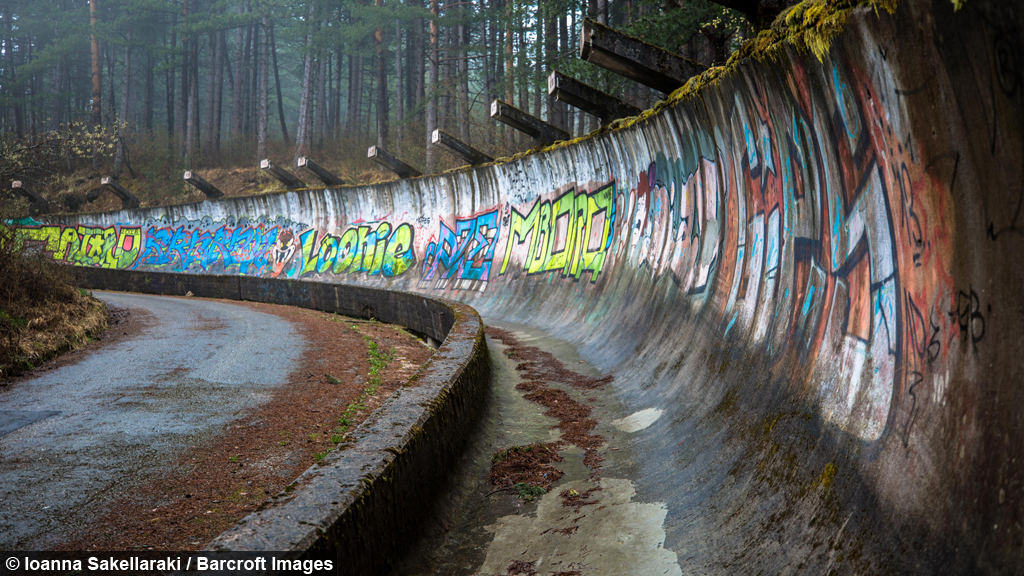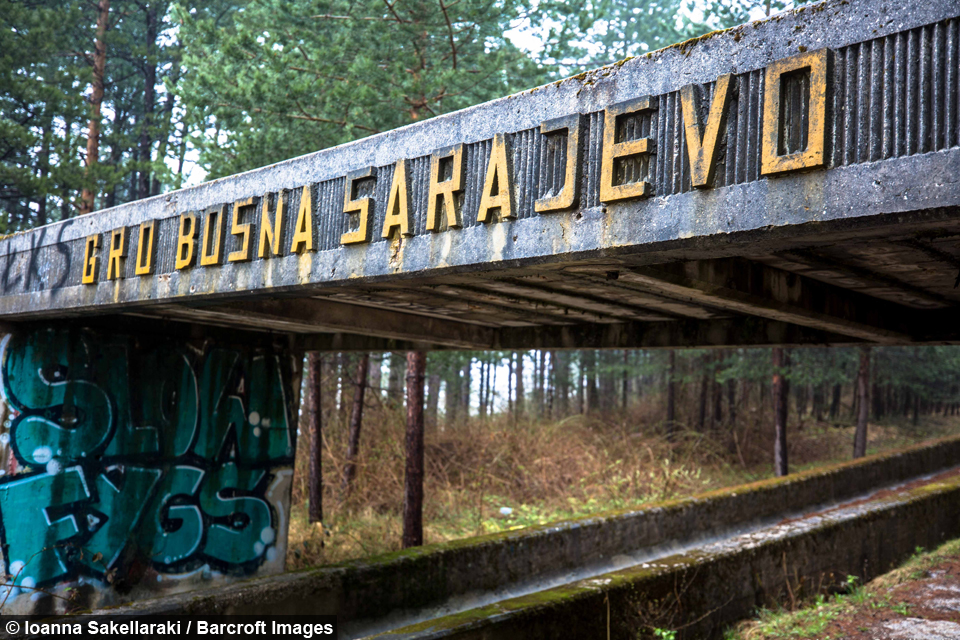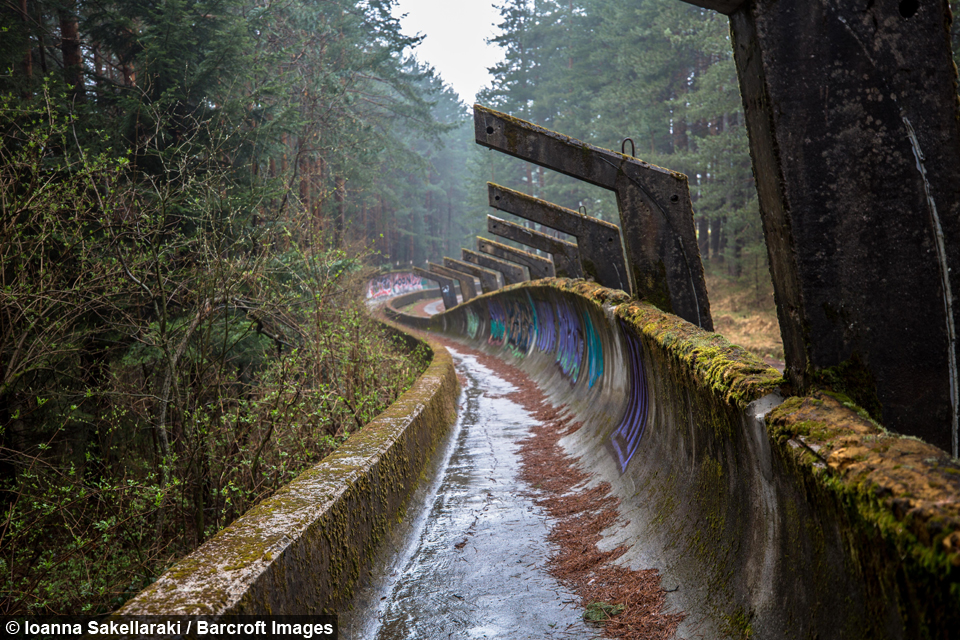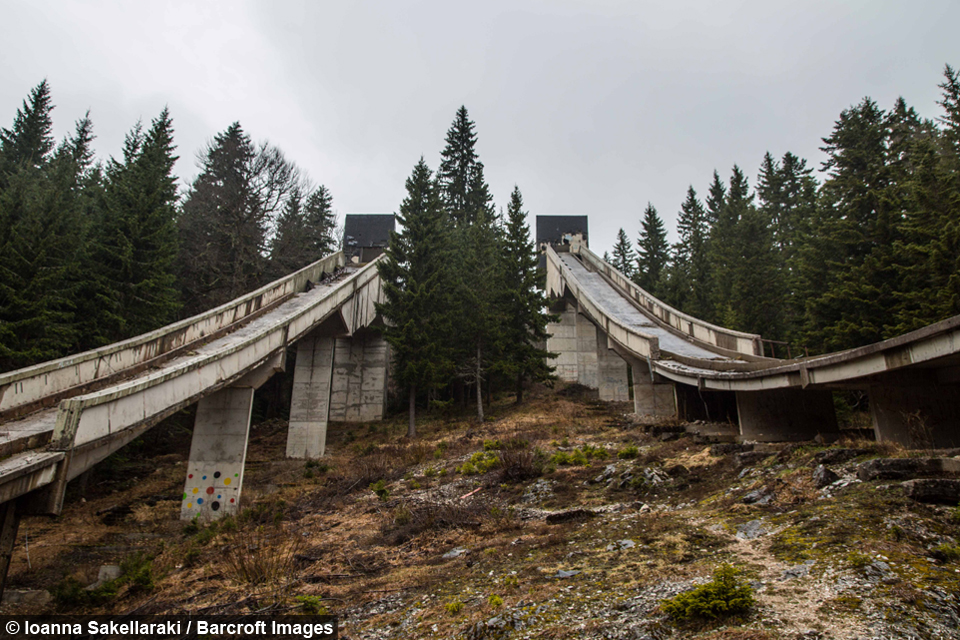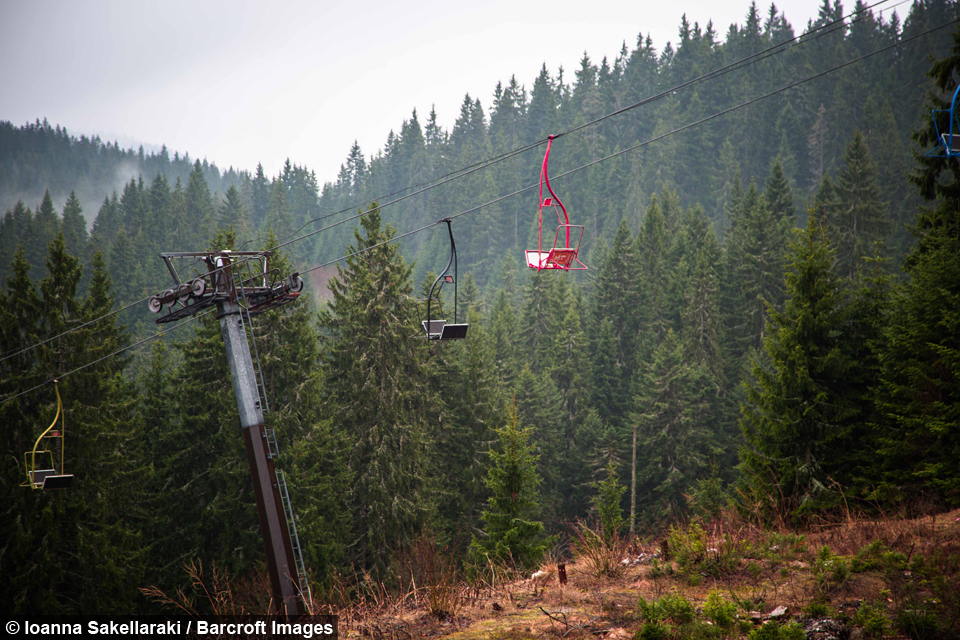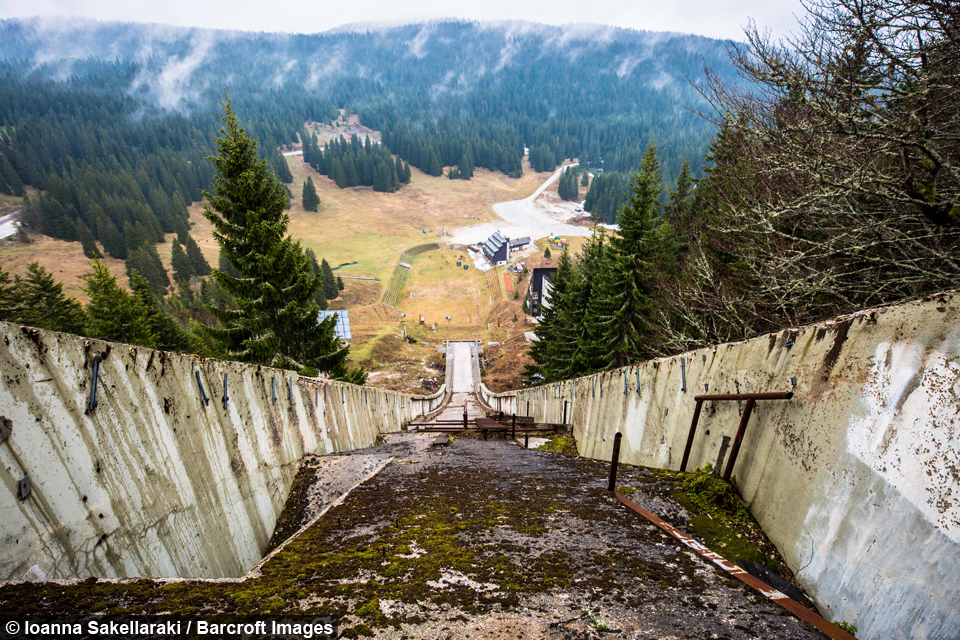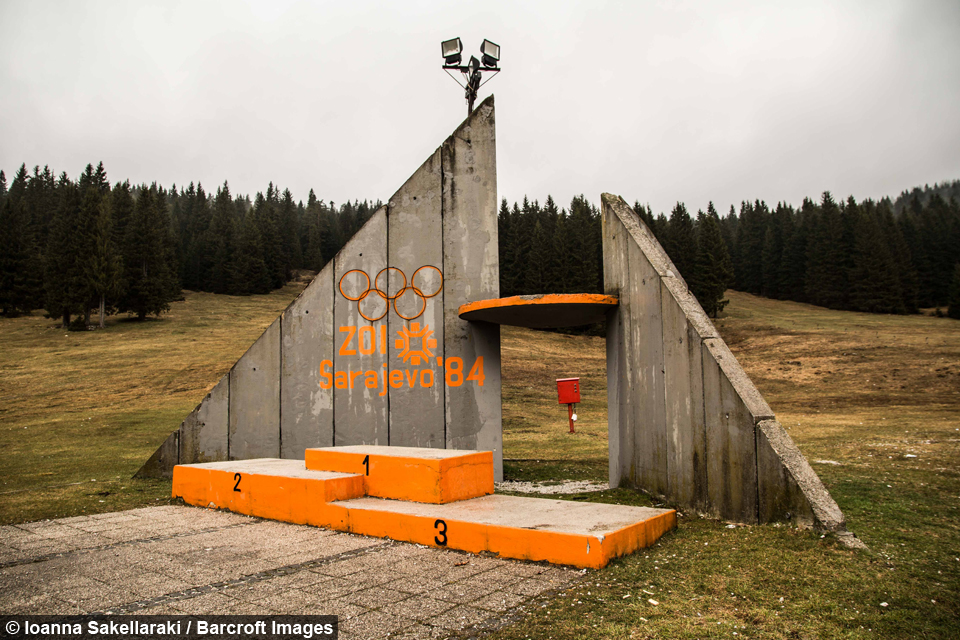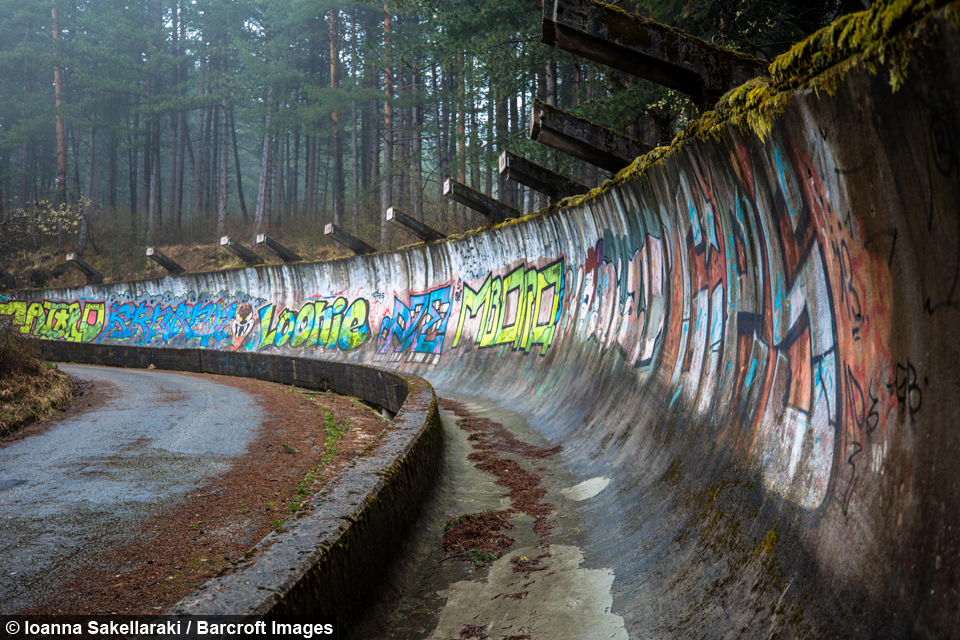Sarajevo's Winter Olympics site in ruins three decades after games
By Bunmi Adigun @Bunmi_Adigun
Scroll down for the full story
Once regarded as a great achievement for the small European city, in time it would be the setting for one of the bloodiest civil wars in the 20th century.
The 1984 Winter Olympics was the first ever winter olympics hosted by a communist state and was seen at the time as a major coup for socialist Yugoslavia.
Photographer Ioanna Sakellaraki, 27, documented her visit to the now abandoned venue in April 2017.
She said: “I was very curious to visit Bosnia and Sarajevo. After four years of brutal war, the city today, 21 years after, has been transformed into a vibrant cultural and historical site that is definitely worth a visit.
“The Winter Olympic Games facilities were a highlight of my visit.”
Less than a decade after the winter games, Yugoslavia was plunged into a civil war and the Olympic venue was at the centre of everything as the city was surrounded by various military factions.
Many of the forces involved in the brutal conflict used the venue as a base of operations and would carry out executions on podiums that once celebrated the world’s best athletes.
The aftermath of the war can still be seen today in the Olympic venue.
Ioanna said: “Eight years after the 1984 winter games, the Bosnian War left the city with buildings full of bullet holes, ski slopes dotted with land mines, and a graveyard just outside the very stadium that once held the opening ceremonies.”
Greek native Ioanna travelled around Bosnia and Herzegovina as well as other Balkan states as part of a new photography series she’s working on.
She said: “I spent four days in Bosnia but travelled all around the country and spent 12 days in total around the Balkan region constructing a portrait of current Yugoslavia.”
Her visit to the 1984 Winter Olympics venue was not the first time the photographer had visited an abandoned Olympic site.
A few years ago Ioanna visited the now deserted Olympic venue in Athens which still had a heavy security presence, despite the fact that it had been neglected for so many years.
This however was not the case in Sarajevo as she found getting into the venue incredibly easy.
Ioanna said: “I was surprised at how accessible the venue was. I visited Athens’ decayed Olympic venues from 2004 for instance and they are still secured but the one in Bosnia is totally accessible."
Iconic sites at the venue have been left to rot since the end of the war in 1995 with ski slopes and the bobsled track turning into canvases for local graffiti artists.
Much of the venue has become virtually unrecognisable as the surrounding woods have taken over most of the area returning it to nature.
Locals are also a rare sight around the ruins of Sarajevo’s Winter Olympics as the site still carries with it painful memories of the war.
Ioanna said: “It has turned into a decayed wasteland targeted by graffiti artists as it stands alone, lost in nature slowly deteriorating. Kosevo Stadium, a soccer field used in the Olympics’ opening ceremony, became a graveyard to bury some of the 10,000 people who died in the [Sarajevo] siege.”
She added: “There were no locals around the facilities as they are lost in nature and far from the city centre but I spoke with locals for my project during my stay who recounted their memories of the war.”
